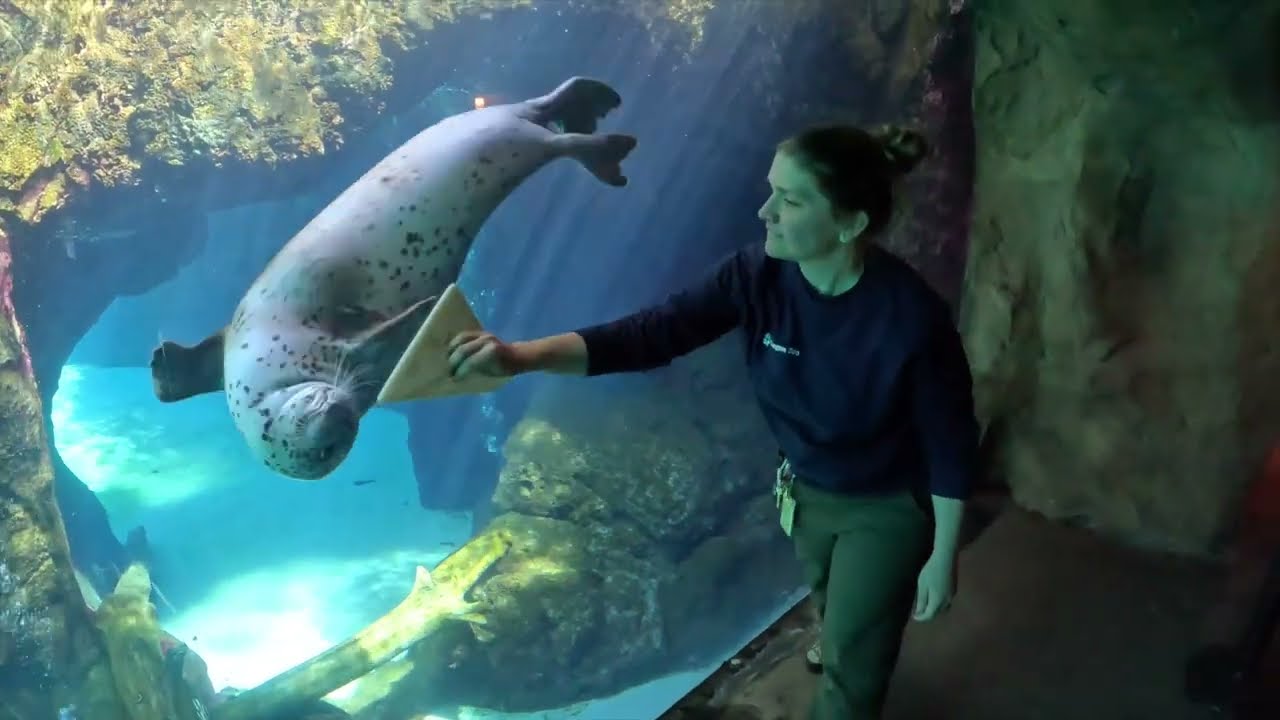– Insights into the hunting techniques of harbor seals underwater, focusing on their ability to detect shapes
– The significance of understanding these behaviors in conservation efforts
– The role of zoos and aquariums in educating the public about marine mammals and their preservation
– The integration of science and wildlife management in safeguarding harbor seal populations
Harbor seals possess a fascinating and effective strategy for hunting underwater, which revolves around their ability to discern shapes. This ability enables them to locate and capture prey even in the murky depths of limited visibility. Their hunting technique is a testament to the evolutionary adaptations of marine mammals and underscores the importance of sensory perception in the animal kingdom. Harbor seals typically rely on acute vision, sensitive whiskers (vibrissae), and perhaps even echolocation to navigate and hunt in their aquatic environment.
The significance of these behaviors extends beyond mere curiosity. Understanding how harbor seals hunt for shapes underwater contributes to broader conservation efforts. It sheds light on their dietary preferences, habitat requirements, and interactions with their environment. This information is crucial for developing effective management and conservation strategies, particularly where human activities may impact harbor seal populations. By comprehensively understanding their behavior and ecological needs, conservationists can implement measures that ensure the sustainability of harbor seal habitats and the health of the populations.
Zoos and aquariums are pivotal in the public’s understanding and appreciation of marine mammals, including harbor seals. Through educational programs, exhibits, and interactive experiences, these institutions can inform visitors about the complex lives of harbor seals, their hunting strategies, and why their conservation is important. Educating the public about the challenges harbor seals face in the wild, such as pollution, climate change, and overfishing, encourages proactive engagement in conservation efforts. Furthermore, zoos and aquariums often participate in or support scientific research to further our understanding of marine mammals, contributing valuable data that can aid in preserving these species.
Integrating science and wildlife management is essential in safeguarding harbor seal populations. Scientific research, including studies on their hunting behaviors, provides the foundation for informed management decisions. This can include the establishment of protected marine areas, regulations on commercial fishing practices to reduce bycatch, and initiatives to clean up ocean pollution. In addition, tracking the health, population dynamics, and migration patterns of harbor seals can help identify emerging threats and evaluate the effectiveness of conservation strategies over time.
Harbor seals’ ability to hunt for shapes underwater is a remarkable behavior that highlights their adaptability and the complexity of marine ecosystems. By investing in research, education, and conservation initiatives, humans can help ensure that harbor seals and other marine species continue to thrive in their natural habitats. This approach supports the biodiversity of our oceans, which is vital for the planet’s health and future generations’ well-being. Understanding and protecting the intricate web of life under the sea is a key part of global conservation efforts, and harbor seals serve as an important focal point for these endeavors.
*****
Source Description
Shape up!
Each member of the harbor seal family has a special shape they’ve learned to find underwater. Hunting is a natural behavior for harbor seals, who dive for their food. Once the seals find their shape, care staff deliver some of their favorite snacks to sealebrate a job well done!


